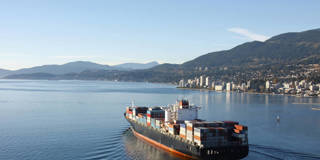If done right, the proposed Trans-Pacific Partnership could help Mexico, Peru, and Chile – the accord’s Latin American members – make the leap to high-productivity exports based on innovation. But that would require the TPP to foster, not impede, the flow of knowledge around the Pacific Rim.
SANTIAGO – With the International Monetary Fund having just cut its forecasts for economic growth in Latin America for the fifth year in a row, the region’s countries are casting about for ways to reignite investment and boost productivity. They should look to fast-growing Asia, argue advocates of the Transpacific Trade Partnership (TPP), the proposed mega-regional trade accord that would bind together 12 Pacific Rim countries. But should they?

SANTIAGO – With the International Monetary Fund having just cut its forecasts for economic growth in Latin America for the fifth year in a row, the region’s countries are casting about for ways to reignite investment and boost productivity. They should look to fast-growing Asia, argue advocates of the Transpacific Trade Partnership (TPP), the proposed mega-regional trade accord that would bind together 12 Pacific Rim countries. But should they?